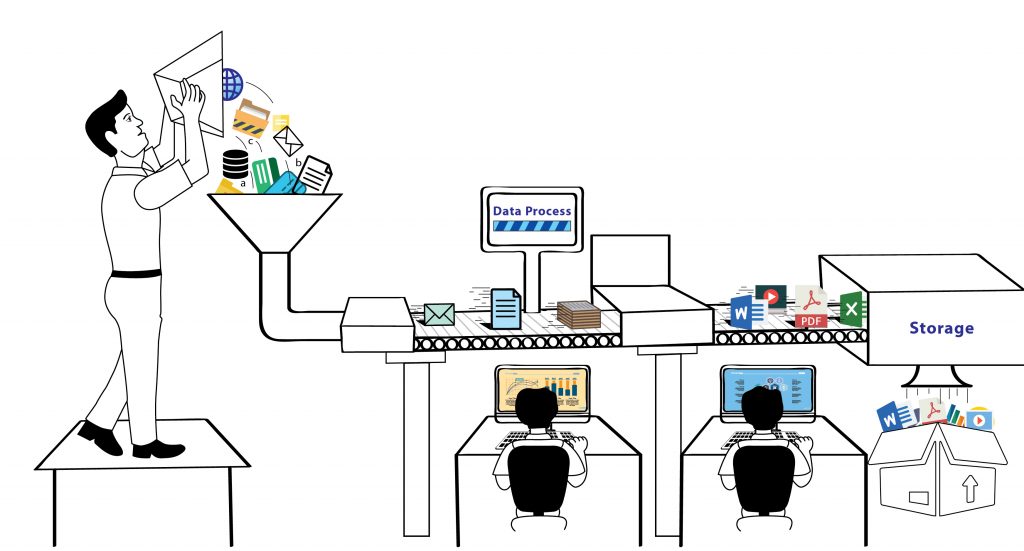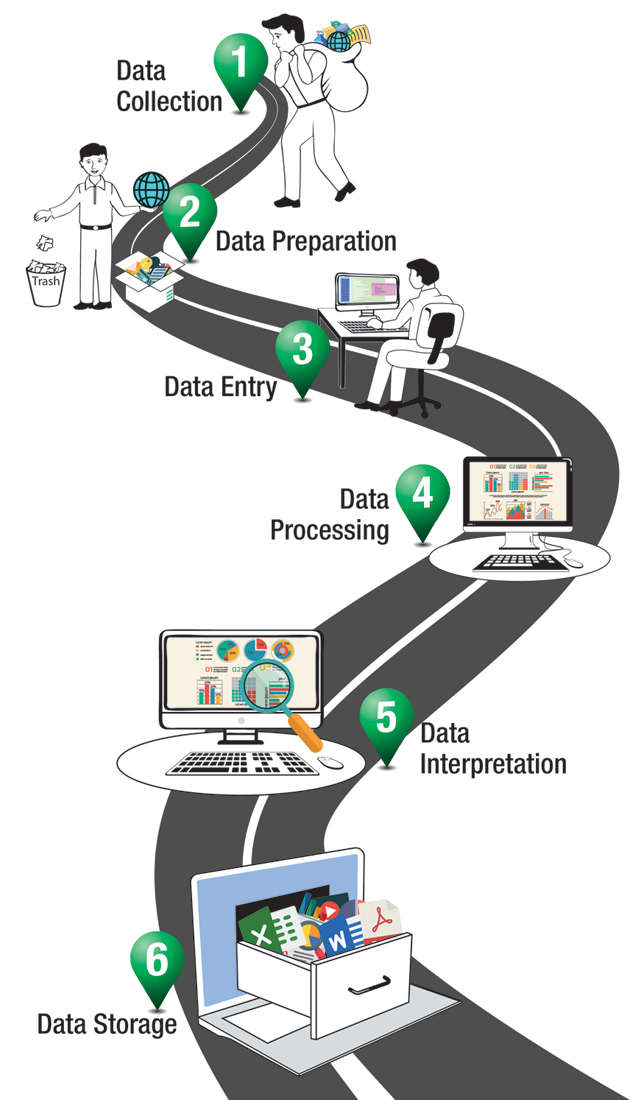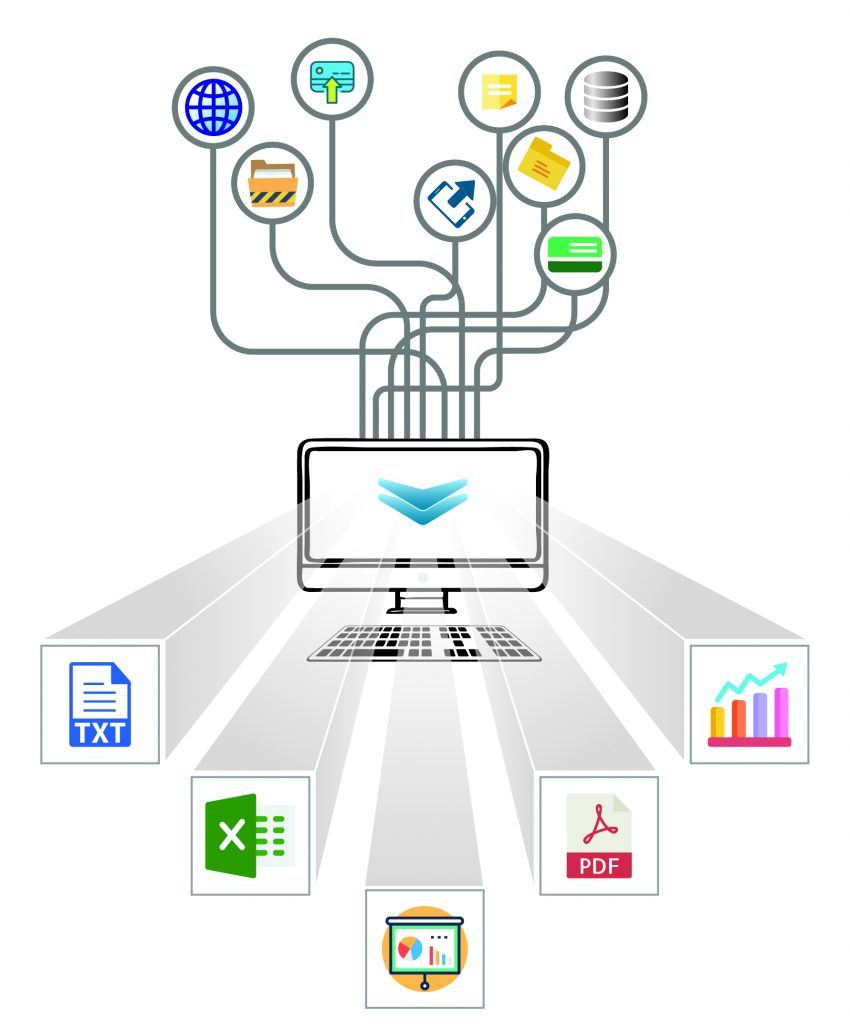
Processed data is further used for data analysis process and results are presented in form of images, graphs, tables, vector files, audios, charts, forecasts, business profile or any other desired format – based on data processing methodology used. Data processing has gone a step further and made data processing jobs more intense and skillful.
Automatic data processing definition
The conventional definition of data processing is activity of collection and manipulation of items of data to produce meaningful information, or data processing is the sequence of operations performed to convert raw data into usable form, automatically or manually. In recent years the definition has changed to Operations performed on a given set of data to conduct analytics and extract the required information in appropriate forms such as diagrams, reports, or tables.
Different types of data processing
- Manual data processing is the activity of processing data manually without using machines or electronic devices, and is solely dependent on human brains and efforts. Automatic method for completion of the data processing adds that element of completeness to the activity.
- Mechanical data processing is done with help of mechanical devices or simplistic electronic devices like calculators and type writers. Simple data processing needs can be managed with help of this methodology.
- Electronic data processing is amongst the fastest and best available method providing highest reliability and accuracy. Every data processing service provider employs computers laced with latest technology and software that form an integral part of the entire activity.
6 stages of the data processing lifecycle
Data processing cycle, as the term suggests, is a sequence of steps or operations for processing data i.e. processing raw data and converting it to a usable form. It has 3 broad stages including Data input – Data processing and Data output, which further can be dissected.
Enlisted are the 6 stages of the data processing cycle:

- Data collection process is the first stage and very crucial as the quality of data collected impacts the output or results of the data processing activity – heavily.
- Data preparation is the activity of manipulating the data meaningfully and converting it in a form suitable for analytics and preparing visual dashboards.
- Data entry, also known as data input, is the process where verified data is keyed in with help of keyboard, digitizer, scanner, or data entry from an existing source; to convert or code it into machine readable forms.
- Data processing is the stage where collected, prepared and keyed in data is subjected to various means and methodologies of manipulation including multiple threads of execution of instructions. One can call it to be partial data migration process as well. The beauty of it is that the activity is specially designed to process petabytes of data within short period of time.
- Data interpretation is done to provide meaningful information to guide future decisions of the company and output is shared/ sent to the user in various report formats such as printed report, audio, video, or on workstation monitors.
- Data storage is the last stage across data processing cycle where instruction and information related to data are stored for future use. It also empowers users with quick access and retrieval of the processed information and can be passed on to the next stage of data analysis process – directly.
Above mentioned stages of the data processing cycle have a particular sequence to be followed rigorously when data processing is done manual. Automatic data processing has inbuilt algorithms with pre-defined steps, which reduce the chances of error considerably, but that too only when data collection, preparation, & data entry are done correctly.
Different types of output files received as “processed” data

- Plain text files are the simplest form of processed data. They are mostly user readable and easily comprehensible. No further processing is possible with these types of files.
- Tables and spreadsheets are widely used file formats, and suitable most for numeric data. Digits in rows and columns enable users at an organization to perform a set of operations like filtering & sorting in ascending and descending orders, further making it easy to use and understand. Several mathematical operations can be deployed when using such a file format.
- Charts & Graphs have become a standard feature in data management and analytics solutions provided by most of the data processing services. It helps immensely in dealing with numerical values portraying trends, growth, declines and elements alike. With availability of a wide variety of charts and graphs to satisfy diverse business requirements – need of user defined charts and graphs option cannot be ruled out; which data processing partners always take care of. It has gained popularity as processing data visualization.
- Maps/Vector or image files come in really handy for urban planners while dealing with spatial data. With information on maps planners pace up their work accurately when they have to work on different types of maps. Such image files are received when managing graphics.
- Apart from above mentioned, there are other formats/ raw files available that can be used and processed by specialized software. Such output files in a manner are said to be incomplete and need further processing too, leading to requirement of multiple data processing for sure shot analysis of processed data.
Data processing limitations
Data processing cycles most of the times have a start and an end point. But at times software and hardware is included, in order to complete the cycle. Partial output from one of the data processing stage, which is to be used as input for next stage – is of crucial importance.
Data processing was done for a media broadcasting company to understand market trends and behavioral patterns of their customers. It was then furnished to analytics team for preparing business intelligence and data visualization dashboards. It helped the media baron with smart use of data asset and gain competitive advantage. So output from data processing team was used as an input by data scientists.
Extra care should be taken to ensure useful and sensible output, which depends on correct sequence of procedures, operating skills of data processing professionals, and their understanding of steps that form the cycle. If an in-house employee /computer operator/machine foreman or software, fails to perform the steps in sequence, entire output might get wasted.
Why you need data processing services?
Data processing is one of the most important tasks, of a data management process, especially when doing data mining. The need to process data is widely acclaimed and realized across industries. Partnering an experienced and skilled data processing service provider brings in increased productivity and profits, decisions that are better, more accurate and reliable – for your business.
Companies can consider cost reduction, ease in storage, distributing and report making followed by better analysis and presentation as additional benefits. Data processing has become a multidimensional process and is involved in almost every aspect of human life.



